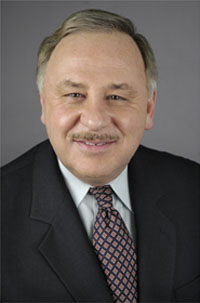Working Together Works
September 21, 2011 - Traditional school principals lead from the top. But current thinking argues for a new model of school leadership – one that draws on the collective energies and abilities of principals and teachers.
Distributed leadership, as it’s called, posits leadership as a collective activity, in which principal and teachers form a team, sharing work, responsibilities, and decision-making authority.
In 2004, John DeFlaminis, director of the Penn Center for Educational Leadership (PCEL) at Penn GSE, launched a five-year intervention to introduce distributed leadership into the School District of Philadelphia.
Faced with the twin challenges of anemic student achievement and high turnover rates among school

leaders, the district faced a pressing need for qualified leaders to foster true instructional improvement.
With funding from the Annenberg Foundation, DeFlaminis staged the Distributed Leadership Project in 16 randomly selected Philadelphia schools – ten elementary, one middle, and five high schools – between 2006 and 2010. While schools applied to participate and were selected by lottery, individual applicants had to be selected as members of their school’s leadership team.
Teams were collaborative and strategically focused on instruction. Each first identified and prioritized its school’s needs and then crafted action plans that laid out the leadership work required to address those needs.
Once formed, teams participated in over 70 hours of training that covered distributed leadership, mission and direction, emotional intelligence, motivation, professional learning communities, teamwork and conflict resolution, peer coaching, the use of data and evidence, and literacy and mathematics leadership. Leadership coaches provided weekly on-site coaching.
Based on research and his own prior experience as a superintendent, DeFlaminis undertook the project “with a great deal of confidence in the potential of distributed leadership for urban schools.” And the teacher leaders he worked with more than confirmed his judgment.
Many were already taking informal leadership roles in their schools, and while not one of the project’s goals, many chose to take the next step. Today, more than half have pursued principal certification, some teachers are already principals, and some principals now serve as deputy or assistant superintendents.
“Everyone who participated in project was deeply impressed by the quality and commitment of the teachers we worked with,” DeFlaminis explains. “Contrary to conventional thinking, urban principals – even those new to the job – could indeed surround themselves with teacher leaders and together they could build school leadership capacity and culture."
Although data on student achievement are still subject to analysis, DeFlaminis notes that virtually all the participating schools made Annual Yearly Progress during the study timeframe.
At every site, DeFlaminis and his colleagues encountered energetic, effective teacher leaders with deep reserves of knowledge and skill. “They relished leadership training,” he reports, “seeing it as a way to better influence instructional practice and to develop more teacher leaders in their school.”
Moreover, because the project design gave teams autonomy in choosing their instructional targets, they developed strategies based on their building’s particular needs. Being both organic and relevant to the school, these “home designed” strategies had far more impact on the wider school culture than the top-down mandates issued by the Central Office.
Or, as one principal put it, “Distributed leadership just gave me the tools that I needed to bring people on board. And I’m not talking necessarily about the team members, I’m talking about the people not on the team. It’s just allowed people to lead with me.”
